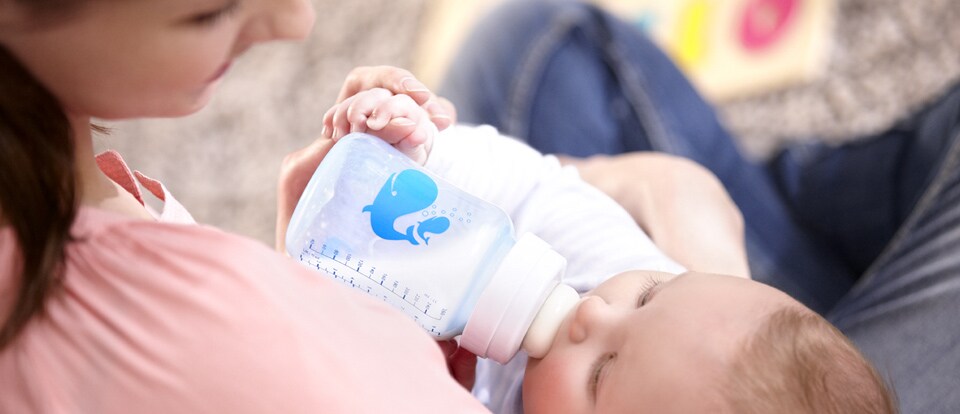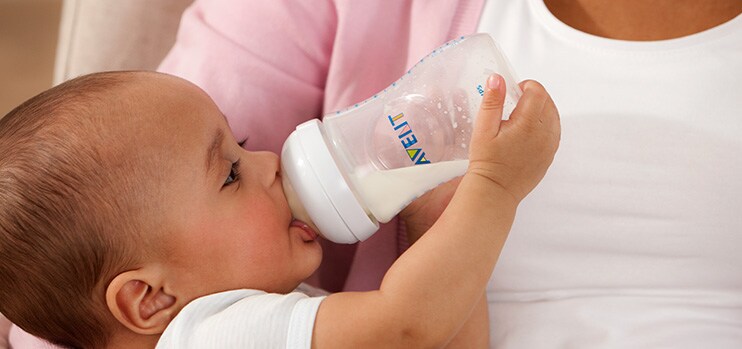


As with breastfeeding, there are certain positions that will suit your baby better when they move on to bottle feeding.
Hold your baby close to you on your lap in a semi-upright position so you can make eye contact. If necessary, put a pillow on your lap to raise your baby up.
As with breastfeeding, alternate your hold positions from side to side. This will help your baby's eyes and neck to develop more equally. Try alternating halfway through the bottle after burping your baby. By doing this from the very start, your baby is less likely to choose a preferred side.
The underarm hold is a good choice if you’ve had a caesarean delivery, or if you have twins. Place a pillow across your lap to help support your baby in this position.
It’s important to get a teat with the right sized hole for your baby. You can choose slow, medium or fast flow teats.
Please be aware that the information given in these articles is only intended as general advice and should in no way be taken as a substitute for professional medical advice. If you or your family or your child is suffering from symptoms or conditions which are severe or persistent or you need specific medical advice, please seek professional medical assistance. Philips Avent cannot be held responsible for any damages that result from the use of the information provided on this website.